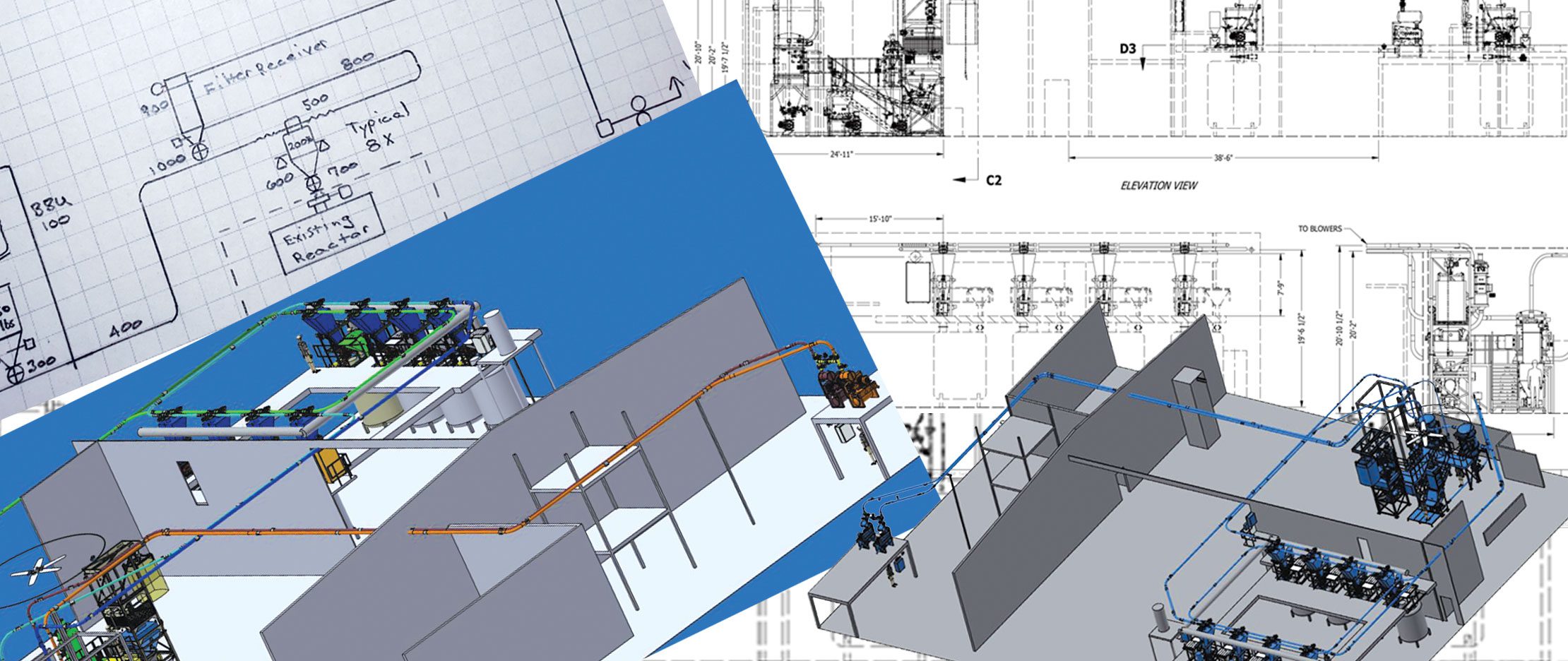

Understanding Sales Drawings: The Difference Between Sales Drawings and Detailed Design Drawings
A sales drawing is often the first visual representation of a product or system concept. It's a simplified sketch, usually a line diagram, showing the basic product flow and the type of equipment to be used. These drawings typically include basic structural dimensions like elevation and position and the relative positioning of equipment. However, they are greatly simplified and only offer a basic understanding of the project.
On the other hand, a detailed design drawing is a comprehensive document with specific measurements, details about the materials used, and a 3D layout of the piping involved.
According to Anatoly Grushansky, Magnum’s senior engineering manager, "The sales drawing that initially would look like a simplified hand sketch would be dressed up and contain more information that would help the customer understand what they're buying and us to understand what we provided."
The drawing undergoes a significant transformation when the project moves from the sales phase to the design team. The design team adds more detail, including specifics about the equipment used, and often creates a 3D system layout, including piping. This step opens up the understanding of existing structures that may present concerns and considers more granular elements like pipe runs and elbow fittings.
The Impact of Design Changes on Manufacturing Costs
The design changes can significantly impact manufacturing costs. As the design becomes more detailed, it may become apparent that additional components or more complex processes are required. For instance, discovering the need for other pipe runs or elbows could trigger a necessary recalculation of blower capacity, prompting a potentially costly conversation with the customer.
The relationship between design changes and manufacturing costs is more intertwined than one might initially perceive.
"Design changes can trigger the necessity to recalculate costs and delivery schedule. If we provide the same value, it would trigger another conversation with the customer,” says Anatoly. “We provided you 25 hours of our blower with such and such capacity. It must be re-calculated based on what we see. We try to prevent this during the initiation and proposal phase when the project is still in the hands of sales."
Accuracy in design drawings is paramount. The repercussions of inaccurate design drawings can range from minor fixes to major overhauls, depending on the discrepancy between the design and reality.
"The cost could be small or severe, based on the discrepancies and how far we are from reality with our design,” Anatoly explains. “The hardest would be to deliver equipment to the customer's field and realize we need to do some tweaks. It wouldn't cost only time and money, but it would also damage the company's image, which is hard to come back from."
The Role of Software in Design and Drawing
Software plays a crucial role in contemporary design processes. 3D modeling CAD (Computer-Aided Design) software is widely used across industries. Major packages include Creo, SolidWorks and Autodesk Inventor, each offering slightly different interfaces but similar capabilities. These software packages enable engineers to create detailed and accurate designs based on 3D parametric modeling linked to their drawings, which are essential in minimizing manufacturing costs and maintaining product quality. They're the industry standard and the backbone of modern manufacturing design processes.
The Importance of Communication
Communication is critical in the design and manufacturing process. Effective communication between designers, sales teams, production teams, customers and vendors is essential in addressing and preventing potential issues. This collaborative approach helps ensure accurate design drawings, efficient manufacturing processes and customer satisfaction.
"Communication is the main aspect that everything starts and ends with,” explains Anatoly. “Communication with customers, vendors and internal communication is all key. As a friend used to say, if you think you communicate, you probably don’t."
To sum up, the manufacturing world revolves around the axis of production drawings. These drawings, far from mere sketches, are the blueprints guiding the creation of tangible products. They shape the manufacturing process, dictate the cost implications and, most importantly, bring the vision to life.
Have you heard?
Magnum Systems has a podcast series, AIM!
RELATED POSTS
Special Project Manager Shares Common and Doozy Pneumatic Conveying Challenges
You're Not Going to Fill a Juice Glass with a Fire Hose
Pneumatically Speaking in Terms of Efficiency, Compliance & Safety
Packaging Powder, Pellets and Flakes: How Not to Blow It
Automated Packaging Lines: Wringing Out Every Ounce
Related Post
Why Use a Single-Source Systems Integrator Like Magnum Systems?
What Are the Advantages of Dense-Phase Pneumatic Conveying?
Mastering Integration in Manufacturing with Magnum Systems: A Deep Dive Podcast Episode
The Secrets of Valve Bag Sealing: Expert Insights from Magnum Systems